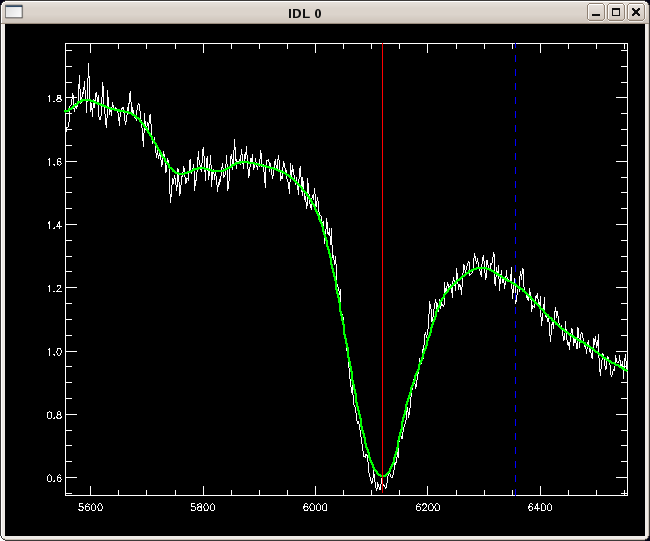The data are copied over from Arizona to the CfA at around 12:00pm Eastern time.
The main thing when coping the data is to help the COMP file be the next file after any Science image. for example: 0045.Fiege34.fits 0046.COMP.fits If the observer takes 3 images, often to center the trace on the 2-d CCD, just take the last image for example: 0045.Feige34.fits 0046.Fiege34.fits 0047.Fiege34.fits 0048.COMP.fits
First thing is to remove the cosmic rays from the 2-d SN data. ls *sn*.fits > dolist for FAST: .run la_cosmic_16bit.pro readcol,'dolist',dolist,f='a' la_cosmic_16bit,dolist,readn=4.40,gain=0.80 exit
The 1D wavelength-calibrated extracted spectra are obtained through standard routines in IRAF. See this page for scripts and examples.
The 1D spectra are then flux calibrated with a set of IDL routines written by Tom Matheson. See this page for scripts and examples.
In most cases you will want to report the velocity of maximum absorption in some line. A quick and simple way to do this is with the IDL vabs.pro routine (get it from /home/sblondin/idl/vabs.tar. Type 'vabs' at the IDL prompt for syntax and options. E.g., to determine the absorption velocity of the Si II 6355 line in sn2008bf-20080330.flm (available at /data/www/projects/supernova/SNfast/reduced/):
IDL> vabs, 'sn2008bf-20080330.flm', 12, 0.024580 Wavelength of minimum is 6119.88 Absorption velocity of SiII 6355 is -11296 km/s Is this OK? [y/n] :

NOTE on the SN redshift: When using a redshift from NED, you should preferentially choose a redshift measured from optical lines (click on the Vel/z column in the table at the start of the main page for a given galaxy. E.g. for SN 2008bf, host galaxy NGC 4061: this redshift page. If there are several optical redshifts (as is the case for NGC 4061), we usually report that given in the The Updated Zwicky Catalog, reference code 2000UZC...C......0F.